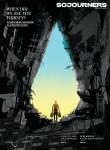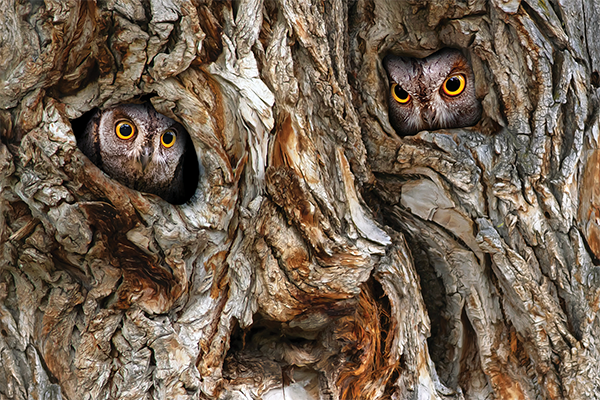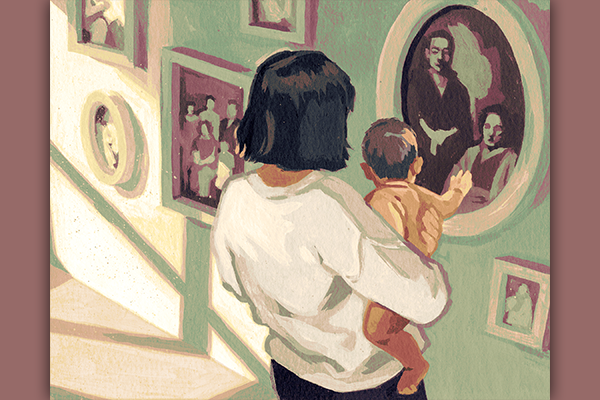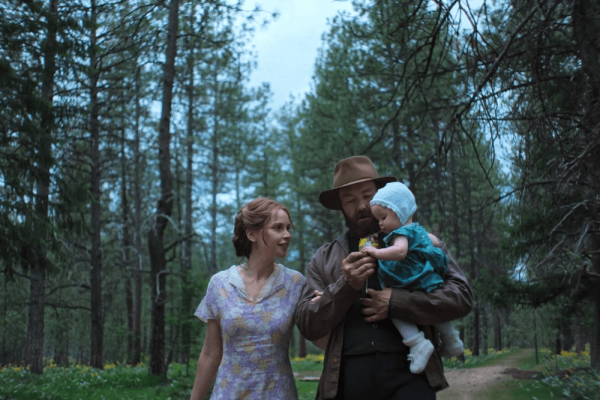AT THE BEGINNING of 2025, I felt braced for impact. A sudden loss in my extended family, the widespread fires and evacuations in my city, Los Angeles, and the onslaught of unjust actions from the Trump administration had contorted my posture into a prayer: Please nothing next. I spent less time outside and more time preoccupied with contemplating how cruel everything seemed. Then, one morning I woke at 4 o’clock to a surprising sound that soothed me — two owls calling back and forth to each other over and over again.
As Mary Oliver underscores, the work of attention is devotional.
Lines from Mary Oliver’s “The Owl Who Comes” arose: We must “hope the world / keeps its balance.” I softened, remembering how beauty endures even after devastation. To support my continued softening, I turned to Oliver and the environmental writer Margaret Renkl for guidance in paying close attention to and loving the world. Immersed in their words and the mysteries they behold, I felt less alone and afraid.
Renkl’s The Comfort of Crows: A Backyard Year begins with an invitation: “[The natural world] will always take your breath away. We were never cast out of Eden. We merely turned from it and shut our eyes. To return and be welcomed, cleansed and redeemed, we are only obliged to look.”
As Oliver underscores in Upstream: Selected Essays, the work of attention is devotional: “For me the door to the woods is the door to the temple.” Oliver, whose poetry shines with lucidity, observes life surrounding her with care and reverence. Similarly, Renkl traces the evolution of her rewilded yard and extracts generative wisdom from even the smallest creatures, like earthworms. These two writers convey that nature should shape our ways of understanding ourselves, each other, and the broader world. In her epigraph, Renkl cites Oliver’s insight: “To pay attention, this is our endless and proper work.”
Neither Oliver nor Renkl romanticize nature as a force that understands us, though. Instead, Renkl describes its “perfect indifference,” as “the best cure [for] anxieties. Every living thing ... is pursuing its own vital purpose ... that sets my human concerns in a larger context.” Similarly, in “I Go Down to the Shore,” Oliver’s speaker asks the ocean for advice, and it replies kindly but firmly that it has “work to do.”
The plants, animals, and elements do not know our emotions or circumstances. The owls I heard were not concerned with my sleepless nights, but their “vital” conversation offered respite from pain and confusion. In Renkl’s words, “In their rest, I find rest.”
Renkl’s search for “radiant things ... bursting forth in the darkest places” is a healing practice. “I’m not trying to hide from the truth but to balance it,” she writes. “I need to remember that the earth, fragile as it is, remains heartbreakingly beautiful.”
When we open to the aliveness beyond ourselves, we are transformed. As Renkl advises: “Turn your face up to the sky. Listen. The world is trembling into possibility ... New life. Rebirth. The greenness that rises out of ashes.”

Got something to say about what you're reading? We value your feedback!







